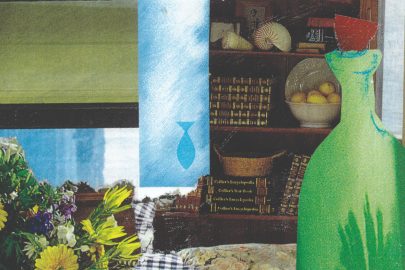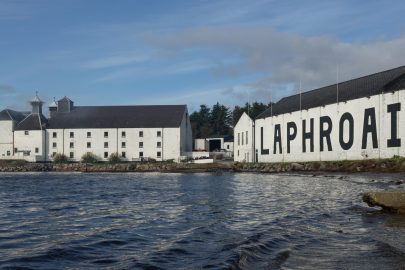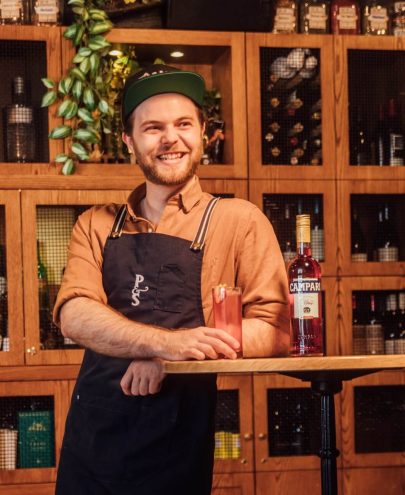Sep 16, 2021 Business
“There are just way too many coffee roasters in New Zealand,” I remember someone telling me as I was buying his in-house roasted beans, after asking how it was all going. Like many others, he’d started out as a barista at someone else’s cafe before being pulled into the vast and varied world of sourcing and roasting.
He wasn’t wrong. There are lots of coffee roasters here, from big companies that deal mostly in wholesale, to tiny micro-roasteries that market their products directly to at-home consumers. During Top 50 Cafe judging, I spotted the same coffee roaster bags again and again next to the sleek machines, and knew they couldn’t even begin to fully encompass the breadth of what New Zealand coffee had to offer — hell, what Auckland had to offer.
So I asked around for recommendations, recruited Sam Low, former New Zealand Barista and Latte Art Champion to give me some schooling and conduct a cup- ping, and tried to sort through all the many, many options so I could help people decide what to get when the choice seemed too overwhelming.
If we’re starting right at the beginning, then some- thing you need to know is that the range of flavour you get from coffee is all down to acid and sugar, and how the adjustment of the two can work to highlight certain characteristics. “There’s no such thing as a bad coffee; it just depends on what you’re wanting out of it,” Low says.
According to Low, brewing is the part of the whole process that affects the final cup the least (your coffee is most likely not ever “burnt” but could be over extract- ed), though is probably the one which receives the most blame. But it really starts from the plant itself, and where
the beans are grown: not just the country, or the region, but also the altitude, climate, and other environmental factors. (Generally speaking, coffee from a lower altitude may have lesser complexity than those grown higher.) There’s the picking and the farming, plus the way it’s processed: natural, washed or honey. Natural may incur more sweetness or body, washed results in more clarity, honey with low acidity and intense sweetness.
Then, roasting. “Good roasters obtain green [beans] and roast them to their full intentions,” Low says. That could mean, for example, a single-origin destined for filter doesn’t carry the caramelised influences of roast- ing, whereas that sugar caramelisation could be an asset for a blend that will later end up in a milky espresso. If something is under-roasted, it may taste too earthy.
When you hear the term “speciality coffee”, it likely refers to beans that have been graded above 80 (out of 100) by the Speciality Coffee Association, a global non-for-profit member-based organisation. When I ask Low how easy it is for farms to gain access to get their coffee graded in the first place, he admits it’s much harder for smaller operations. Some coffee producers, for example, will reach out directly to companies that may have the resources to fly over, taste the coffee, and bring someone certified to assess and grade.
So with all that background, here’s a selection of what I found from smaller roasters, the majority of whom are based in Auckland. Most of the coffee I tasted below were chosen with filter (soft brew) in mind, as that’s what I drink at home and what is easily accessible to most people.

Turning Point, Bow & Tie and Grey Roasting Co.
TURNING POINT COFFEE is run by Stu Hargie, who takes pride in brewing change by acquiring beans from sustainable organic sources (which means the growers are being paid fairly). They currently offer three bags: Foundation, their “crowdpleaser” blend; Explorer, a revolving single-origin coffee; and Next Level, another single-origin type that is something a bit more complex and unique. “Turning Point does a really good job of showcasing single origins the way they’re meant to be, without any crazy experimentation,” Low says. The day we taste their Explorer blend is a fully washed Guatemalan, which is described as being smooth, complex, sweet and balanced. “If you blindfolded me and asked me what this was, I’d have said Guatemalan,” he says. “I’d start with Turning Point if you’re just starting to understand single-origin coffee.”
Based in Clevedon
turningpointcoffee.co.nz
BOW & TIE is a small micro roastery that sources beans from places that don’t seem to get a lot of spotlight else- where in New Zealand: think Indonesia, Mexico, Tanzania, all countries that don’t make a second appearance on this list. It sells a mixture of single origins and blends, with its Bike Blend, smooth and well-balanced, being my pick of the bunch. They also have a little espresso bicycle they bring out for special events, which could be an option for anyone looking for a small, environment-friendly way to bring some freshly brewed coffee to their shindig.
Based in Ellerslie
bowandtie.co.nz
You can find TOB COFFEE in Rosedale, a mostly industrial area over the bridge and in the depths of the North Shore. There, Young-Jin Cha selects and roasts his own beans, with a range of single-origins on offer (sometimes special ones, geishas that go quickly). You’ll also always find the house blend, named Mr Tob, a dark, caramelly Ethiopian-Guatemalan that would be best suited to an espresso. If you get a chance to go to the cafe for a coffee, you should — it’s more of an espresso bar than cafe, without any cabinet food or menu in sight, but it’s the best in the area.
Based in Rosedale
tob-coffee.business.site
DEAR DEER COFFEE ROASTING BAR began in Onehunga by Yuki Shikano. I went to one of their other outposts in central Newmarket, which is much the same concept: green beans sit in wooden pallets labelled with their country and region of origin, tasting notes and prices, waiting to be put in a small roaster. “I like fruity, lighter coffee, and I brew with a V60,” I told the woman running front-of-house. She talked me through the characteristics of beans based on which country they originate from, weighing up the pros and cons of each. After narrowing it down to two, I asked her which was her favourite, and ended up with the Ethiopian Sidamo, which are generally bright and sweet. You then choose your roasting style (light, medium or dark). It’s a great, personalised service, especially for those intimidated by all the bells, whistles, and confusing terminology.
Based in Newmarket
deer-field.com
GREY ROASTING CO. is the work of Dove Chen, who co- owns Grey St Kitchen in Hamilton. Bigger than the others on this list, they aren’t exactly ‘micro’, but aren’t currently in any cafes in Auckland. Their coffees are significantly funkier than the rest I taste on the day, with a fruitiness that kicks. Each bag has a story behind it (for example, the Finca la Florida from El Salvador is made using beans from Aida Batlle, considered the best female producer in the world) and are a good option if you’re a bit further into your coffee journey (or just extremely into it) and are keen to try more progressive brews. They are a little pricier, too: my favourite of the trio we tried, Fincia el Paraiso, from Cauca, Columbia, runs at $40 for 250g and has been double anaerobic washed while processing the coffee, making it super fruity and flavourful. The Panama Finca Nuguo, on the other hand, is an anaerobic natural geisha, and is what Low calls “competition standard” coffee (meaning baristas use it during world championships), sold at $76 for 250g. It’s complex, and seems to dance on your tongue. The producer, Jose Manuel Gallardo, only deals with the geisha variety, which is grown at super-high altitudes.
Based in Hamilton
greyroastingco.com
—
This piece was published in Metro 431 – Available here in print and pdf.






